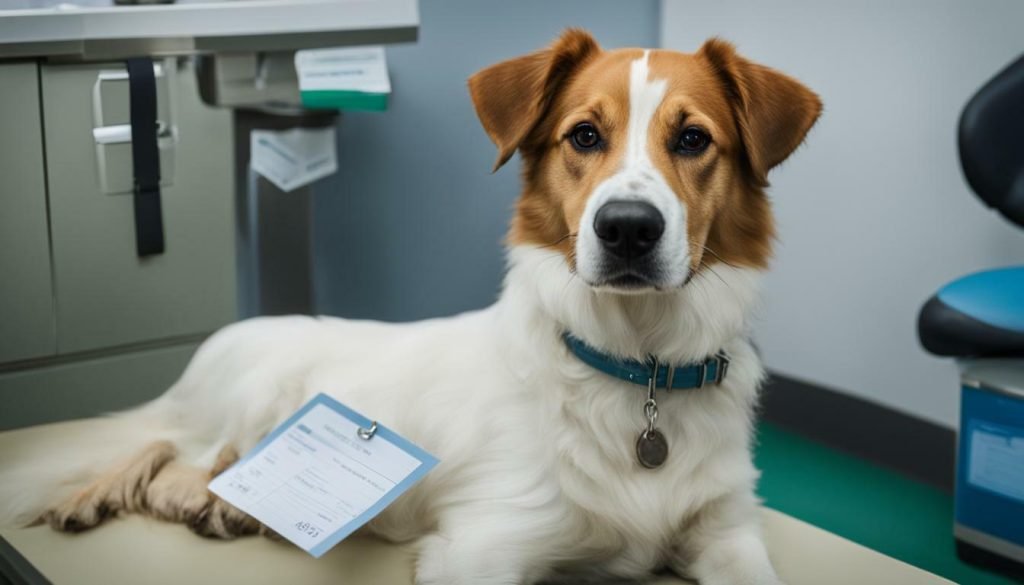
Neutering a dog is an important decision for pet owners, and understanding the cost involved is crucial. The expenses for this procedure can vary based on several factors, including the size and health of the dog, location, and the chosen veterinarian or clinic. Spaying a female dog typically ranges from $340 to $1,500, while neutering a male dog can cost anywhere from $30 to $500 or more.
There are various options available for finding low-cost spay and neuter services. Local pet stores, animal shelters, and humane societies often provide affordable options. It’s advisable to spay small-breed dogs before their first heat cycle and large-breed dogs once they have finished growing.
Neutering and spaying can have significant benefits for the health and well-being of dogs. They help prevent diseases and infections, as well as reduce behavioral issues such as aggression and roaming tendencies. While pet insurance typically does not cover the cost of spaying and neutering, there may be financial assistance available through nonprofit organizations or government programs.
When making a decision about spaying or neutering your dog, it’s essential to prioritize their overall health and well-being rather than solely focusing on the cost. Taking into consideration the long-term benefits and potential risks can ensure the best outcome for your beloved pet.
- The cost of neutering a dog can vary depending on factors such as size, health, location, and chosen veterinarian.
- Spaying a female dog can range from $340 to $1,500, while neutering a male dog can range from $30 to $500 or more.
- Low-cost spay and neuter services can be found through local pet stores, animal shelters, and humane societies.
- Neutering and spaying dogs can have medical benefits, including disease prevention and infection reduction, as well as behavioral benefits like decreased aggression and roaming.
- Pet insurance usually does not cover the cost of spaying and neutering, but financial assistance may be available through nonprofit organizations or government programs.
Factors Affecting the Cost of Neutering
The cost of neutering a dog can vary depending on several factors, including the size and health of the dog, and there are affordable options available for pet owners on a budget. The average cost to neuter a dog can range from $30 to $500 or more, depending on these factors and where you live. Smaller dogs generally cost less to neuter than larger dogs, as the procedure requires less anesthesia and surgical time.
Additionally, the overall health of the dog can affect the cost. If your dog has any pre-existing health conditions or requires additional medical care during the procedure, the cost may increase. It is always important to discuss your dog’s health with the veterinarian to determine the best course of action and associated costs.
For pet owners looking for low-cost dog neutering options, there are several resources available. Local pet stores, animal shelters, and humane societies often offer discounted spay and neuter services to help make them more accessible. These organizations may have partnerships with veterinarians who provide discounted rates, allowing pet owners to take advantage of more affordable options.
Factors Affecting the Cost of Neutering
Size of the Dog:
| Dog Size | Average Cost |
|---|---|
| Small Breed | $30 – $150 |
| Medium Breed | $100 – $250 |
| Large Breed | $200 – $500+ |
 The cost of neutering can also depend on the veterinarian or clinic you choose. Some veterinarians offer discounted rates for spaying and neutering services, while others may charge higher fees. It is always a good idea to call and compare prices at different clinics before making a decision.
The cost of neutering can also depend on the veterinarian or clinic you choose. Some veterinarians offer discounted rates for spaying and neutering services, while others may charge higher fees. It is always a good idea to call and compare prices at different clinics before making a decision.
It is important to remember that while cost is a significant factor, the health and well-being of your dog should be the top priority when considering neutering. Discussing the procedure with a qualified veterinarian can help you make an informed decision about the best course of action for your pet.
Understanding Spaying and Neutering Costs
When it comes to spaying and neutering dogs, there are specific costs to consider, including surgery fees and related expenses. The cost of spaying a female dog can range from $340 to $1,500, depending on various factors such as the size and health of the dog, as well as the veterinarian or clinic you choose. Neutering a male dog, on the other hand, can range from $30 to $500 or more.
These costs may seem significant, but it’s essential to understand the long-term benefits of spaying and neutering. In addition to preventing unwanted litters, these procedures can have significant medical and behavioral benefits for your furry companion.
Spaying female dogs helps to prevent several health conditions, such as uterine infections and certain types of cancer. It also eliminates the risk of complications from pregnancy and childbirth. Neutering male dogs can help reduce the risk of testicular cancer and lower the likelihood of aggression and roaming tendencies.
Spaying and neutering are not just about cost; they are proactive measures to promote the overall health and well-being of your dog.
While the cost of these procedures may vary, there are options for finding low-cost spay and neuter services. Local pet stores, animal shelters, and humane societies often provide these services at reduced rates. Additionally, some nonprofit organizations and government assistance programs offer financial assistance to help cover the costs.

| Procedure | Average Cost |
|---|---|
| Spaying (Female Dog) | $340 – $1,500 |
| Neutering (Male Dog) | $30 – $500 or more |
Ultimately, the decision to spay or neuter your dog should prioritize their health and well-being over cost considerations alone. Consult with your veterinarian to determine the best timing for the procedure based on your dog’s breed, size, and overall health. By taking proactive steps to spay or neuter your dog, you can help ensure a healthier and happier life for your furry friend.
Finding Low-Cost Spay and Neuter Services
Fortunately, there are several options available for pet owners seeking low-cost spay and neuter services for their dogs. These services provide a more affordable alternative without compromising the quality of care. Local pet stores often collaborate with veterinary clinics to offer discounted rates for spaying and neutering procedures. This partnership allows pet owners to access these services at a reduced cost, making it more accessible for those on a tighter budget.
Another option is to reach out to animal shelters and humane societies in your area. These organizations often have programs in place that provide low-cost spay and neuter services for dogs. They understand the importance of preventing overpopulation and strive to make these services affordable and accessible to all pet owners. By utilizing these resources, you can ensure that your dog receives necessary care without breaking the bank.
“Spaying and neutering programs offered by local pet stores and animal shelters are a great way to make these procedures more affordable for pet owners,” said Dr. Jane Thompson, a veterinarian at the Animal Care Clinic. “These services not only help control the pet population but also contribute to the overall health and well-being of dogs.”
Government assistance programs may also be available in your area to help cover the cost of spaying and neutering. These programs are often income-based and provide financial aid to eligible individuals. You can inquire about these programs at your local animal control office or veterinary clinics to see if you qualify for assistance.
When seeking low-cost spay and neuter services, it is essential to research and compare prices to ensure you are getting the best value for your money. While cost is a significant consideration, it’s important to prioritize the qualifications and experience of the veterinarian or clinic performing the procedure. Ultimately, the goal is to provide the best care for your dog while also being mindful of your budget.
| Service Provider | Cost Range |
|---|---|
| Local Pet Store | $30 – $150 |
| Animal Shelter or Humane Society | $50 – $200 |
| Government Assistance Programs | Varies based on income |

Finding low-cost spay and neuter services for your dog is possible through various avenues, such as local pet stores, animal shelters, and government assistance programs. These services offer affordable options without compromising the quality of care. It is crucial to research and compare prices while prioritizing the qualifications and experience of the veterinarian or clinic performing the procedure. By exploring these options, you can ensure that your dog receives the necessary care while being mindful of your budget.
Optimal Timing for Neutering
Timing plays a crucial role in the cost and effectiveness of neutering, and understanding the optimal timing for your dog’s breed is essential. While there is no one-size-fits-all answer, there are general guidelines to consider when deciding when to neuter your dog.
For small-breed dogs, it is generally recommended to spay or neuter before their first heat cycle, which typically occurs between 6 to 9 months of age. Early spaying or neutering helps prevent unwanted pregnancies and reduces the risk of certain reproductive cancers. However, it is important to consult with your veterinarian to determine the best timing for your specific dog.
For large-breed dogs, it is recommended to wait until they have finished growing before neutering. This is usually around 1 to 2 years of age, depending on the breed. Neutering too early in large-breed dogs can interfere with their growth plates and potentially lead to skeletal issues. Again, consulting with your veterinarian is crucial to ensure the optimal timing for your dog’s breed.
By adhering to the recommended timing for your dog’s breed, you not only support their overall health and development but also potentially minimize any additional costs associated with complications. It is always best to consult with your veterinarian to make an informed decision based on your dog’s specific needs.
| Optimal Timing for Neutering Dogs | Small-Breed Dogs | Large-Breed Dogs |
|---|---|---|
| Recommended Age | Before first heat (around 6-9 months) | After they finish growing (around 1-2 years) |
| Benefits | Prevents unwanted pregnancies and certain reproductive cancers | Promotes proper skeletal development |
| Considerations | Consult with your veterinarian for the best timing | Consult with your veterinarian for the best timing |
Neutering your dog at the optimal time can help ensure their well-being and prevent potential health issues. Remember, the cost of neutering is just one aspect to consider when making this important decision. Prioritizing your dog’s health and happiness should always be the main focus.

Neutering dogs not only helps control the pet population but also offers various medical and behavioral benefits that are worth considering. From a medical standpoint, neutering male dogs can help prevent testicular cancer and reduce the risk of prostate problems. It can also eliminate the risk of certain reproductive diseases and infections.
For female dogs, spaying eliminates the risk of uterine infections and greatly reduces the risk of mammary tumors and ovarian cancer. It also eliminates the need for heat cycles, which can be messy and stressful for both the dog and the owner. By spaying female dogs before their first heat cycle, you can significantly reduce their chances of developing these health issues.
Aside from the medical benefits, neutering can also have positive effects on a dog’s behavior. Neutered male dogs are usually less aggressive and less likely to roam in search of a mate. They are also less prone to marking their territory and engaging in unwanted behaviors such as mounting. Female dogs, when spayed, are less likely to exhibit behavioral changes during heat cycles, such as restlessness and a desire to escape.

It is important to note that the behavioral benefits may vary depending on the individual dog and other environmental factors. However, neutering remains a valuable tool in managing certain behavioral issues and promoting overall good behavior in dogs.
| Medical Benefits | Behavioral Benefits |
|---|---|
|
|
| Medical Benefits (Female) | Behavioral Benefits (Female) |
|
|
Financial Assistance for Spaying and Neutering
If the cost of spaying or neutering your dog is a concern, there are financial assistance programs and nonprofit organizations that can help. These options provide affordable or low-cost spay and neuter services, ensuring that responsible pet owners can still provide the necessary care for their dogs without breaking the bank.
One avenue to explore is local pet stores, which often partner with veterinary clinics or organizations to offer discounted spay and neuter services. These partnerships aim to make these procedures more accessible and affordable for pet owners in the community.
Additionally, animal shelters and humane societies can be excellent resources for low-cost spay and neuter services. These organizations prioritize the well-being of animals and often offer discounted rates or even free spaying and neutering for pets adopted from their facilities.
| Organization | Contact Information |
|---|---|
| Local Pet Store | Phone: 123-456-7890 Email: [email protected] |
| Animal Shelter | Phone: 987-654-3210 Email: [email protected] |
| Humane Society | Phone: 555-123-4567 Email: [email protected] |
Furthermore, there are nonprofit organizations dedicated to helping pet owners with the cost of spaying and neutering. These organizations often have financial assistance programs or vouchers that can significantly reduce the expenses associated with these procedures. Some examples include the Pets in Need program and the SpayUSA program, both of which provide financial aid to eligible pet owners.
Remember, when considering spaying or neutering, it is crucial to prioritize the health and well-being of your dog. While cost is a significant factor, the long-term benefits of these procedures cannot be overlooked. By seeking out affordable options through financial assistance programs and nonprofit organizations, pet owners can ensure that their dogs receive the necessary care without sacrificing their financial stability.

Pet insurance plays a vital role in covering various healthcare costs, but does it typically cover the cost of spaying and neutering? When it comes to elective procedures like spaying and neutering, most pet insurance policies do not cover the cost. These procedures are generally considered preventative and are not typically included in insurance coverage. However, it’s important to note that some insurance companies may offer additional coverage options that include spaying and neutering, so it’s worth checking with your provider.
While pet insurance may not cover the cost of spaying and neutering, there are still options available for affordable alternatives. Many local pet stores, animal shelters, and humane societies offer low-cost spay and neuter services. These organizations understand the importance of these procedures in controlling pet overpopulation and often provide discounted rates to make them more accessible to pet owners.
Additionally, pet owners who may need financial assistance for spaying and neutering their dogs can explore options through nonprofit organizations or government assistance programs. These programs are designed to help pet owners with limited financial resources access affordable veterinary care, including spaying and neutering services. It’s worth researching and reaching out to these organizations to see if you qualify for assistance.

| Procedure | Cost Range |
|---|---|
| Spaying (female) | $340 – $1,500 |
| Neutering (male) | $30 – $500 or more |
When making a decision about spaying or neutering, it’s important to consider the overall health and well-being of your dog. While the cost is a factor, it shouldn’t be the sole determining factor. Spaying and neutering can provide numerous medical benefits, such as reducing the risk of certain diseases and infections. These procedures can also have behavioral benefits, like reducing aggression and curbing roaming tendencies.
In summary, while pet insurance may not typically cover the cost of spaying and neutering, there are still affordable options available. Exploring low-cost services through local organizations and researching financial assistance programs can help make these procedures more accessible. Remember, the well-being of your dog should be the primary consideration when deciding to spay or neuter, with cost being just one factor among many.
Considering the Health and Well-being of Your Dog
When considering the cost of spaying or neutering your dog, it’s essential to prioritize their health and well-being above all else. While the cost of the procedure is undoubtedly an important factor to consider, it should not be the sole determining factor in your decision-making process. Neutering and spaying your dog can have numerous medical and behavioral benefits that far outweigh the initial cost.

Spaying female dogs can help prevent serious health issues such as uterine infections and certain types of cancer. Neutering male dogs can reduce the risk of testicular cancer and lessen aggressive behaviors such as territorial marking and roaming tendencies. By spaying or neutering your dog, you’re not only helping to prevent unwanted litters, but you’re also promoting their overall well-being and longevity.
While the cost of spaying and neutering can vary depending on various factors, there are options available for pet owners looking for affordable services. Many local pet stores, animal shelters, and humane societies offer low-cost spay and neuter programs. Some nonprofit organizations and government assistance programs also provide financial aid to pet owners in need. It’s worth exploring these options to ensure that your dog can receive the care they need without breaking the bank.
| Type | Cost Range |
|---|---|
| Spaying (Female) | $340 – $1,500 |
| Neutering (Male) | $30 – $500+ |
Ultimately, the decision to spay or neuter your dog should be based on their individual needs and the advice of your veterinarian. By balancing the cost considerations with the long-term health benefits for your furry friend, you can make an informed decision that ensures their well-being and contributes to responsible pet ownership.
Benefits of Spaying Female Dogs
Spaying female dogs not only helps prevent unwanted pregnancies but also offers various health and behavioral benefits that are worth considering. One of the primary advantages of spaying is the prevention of pyometra, a potentially life-threatening infection of the uterus. By removing the uterus and ovaries, this serious condition can be completely avoided, ensuring the long-term well-being of your furry friend.

Another significant benefit of spaying is the reduction in the risk of mammary gland tumors, particularly if the procedure is performed before the first heat cycle. According to studies, spaying a female dog before the age of 2 significantly decreases the chances of developing mammary tumors, which can be malignant in nature.
Spaying also has behavioral advantages. It can help reduce the likelihood of roaming, as unspayed female dogs may try to escape in search of a mate. Additionally, spaying can often decrease aggressive behaviors, making your dog more calm and docile.
It’s important to note that the cost of spaying a female dog can vary depending on factors such as location and the size of the dog. However, the long-term benefits and peace of mind that come with spaying outweigh the initial cost. When considering getting your dog spayed, consult with your veterinarian to determine the best age and timing for the procedure based on your dog’s specific circumstances.
Conclusion
Understanding the cost of neutering a dog is crucial, but it’s equally important to consider the health and well-being of your pet when making decisions about this procedure.
Spaying a female dog can range from $340 to $1,500, while neutering a male dog can range from $30 to $500 or more. However, the actual cost can vary depending on factors such as the size and health of the dog, your location, and the veterinarian or clinic you choose.
Fortunately, there are options available for finding low-cost spay and neuter services. Local pet stores, animal shelters, and humane societies often offer affordable options for pet owners. It’s worth exploring these avenues if you’re looking to find a cost-effective solution.
When it comes to timing, it’s generally recommended to spay small-breed dogs before their first heat and large-breed dogs when they have finished growing. This helps to ensure the best possible outcomes for your pet’s health.
In addition to cost considerations, it’s important to remember the medical and behavioral benefits of spaying and neutering. These procedures can help prevent diseases and infections, as well as reduce aggression and roaming tendencies in dogs.
While pet insurance usually does not cover the cost of spaying and neutering, there may be options for financial assistance through nonprofit organizations or government assistance programs. It’s worth exploring these avenues if you need help covering the cost of the procedure.
Ultimately, when making a decision about spaying or neutering your dog, it’s important to prioritize the health and well-being of your pet. Consider the potential benefits of the procedure beyond just the cost and make an informed decision that will benefit your furry friend in the long run.
FAQ
How much does it cost to neuter a dog?
The cost of neutering a dog can vary depending on factors such as the size and health of the dog, where you live, and the veterinarian or clinic you choose. Spaying a female dog can range from $340 to $1,500, while neutering a male dog can range from $30 to $500 or more.
Where can I find low-cost spay and neuter services?
There are several options for finding affordable spay and neuter services. You can check with local pet stores, animal shelters, or humane societies for low-cost options in your area.
When is the optimal time to neuter a dog?
It is recommended to spay small-breed dogs before their first heat and large-breed dogs when they finish growing.
What are the medical and behavioral benefits of neutering?
Neutering can have medical benefits such as preventing diseases and infections, as well as behavioral benefits such as reducing aggression and roaming tendencies.
Does pet insurance cover spaying and neutering?
Pet insurance usually does not cover the cost of spaying and neutering. However, there may be options for financial assistance through nonprofit organizations or government assistance programs.
Should I prioritize cost or the health and well-being of my dog when deciding to spay or neuter?
It is important to consider the health and well-being of your dog rather than solely focusing on the cost. Making decisions about spaying or neutering should be based on what is best for your dog’s overall health and quality of life.






